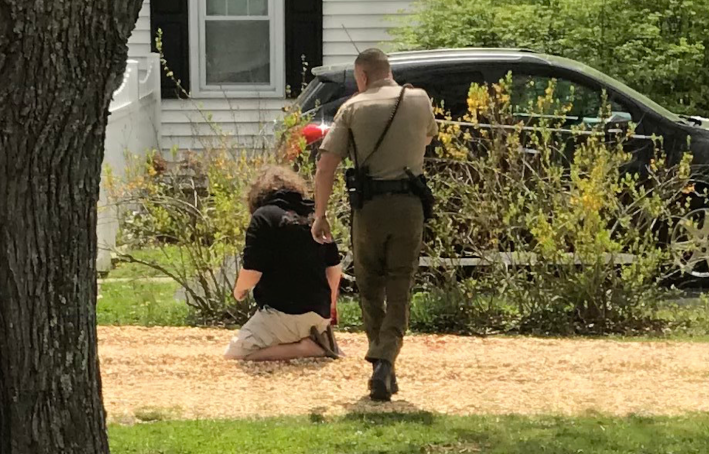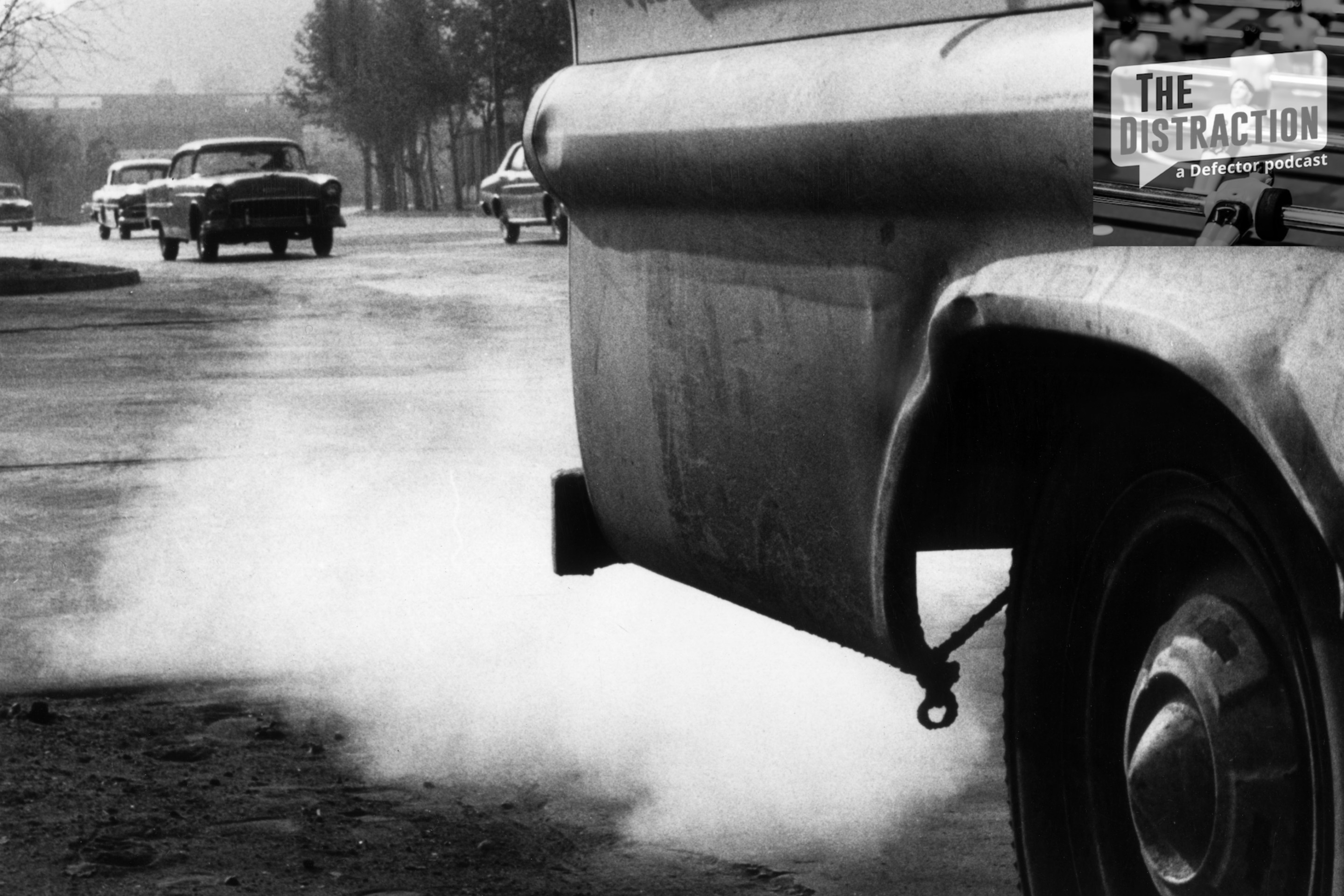Peyton Ham's family finally got a day in court. The first of many, they hope.
On May 10, a three-judge panel from the U.S. Court of Appeals for the Fourth Circuit in Richmond, Va., heard the appeal in the case of Kristee Boyle v. Joseph Azzari, Jr., stemming from the April 2021 killing of 16-year-old Peyton Ham of Leonardtown, Md., by Azzari, a trooper with the Maryland State Police. Boyle is Ham's mother.
The only official investigation ever conducted into Ham's killing was overseen by Azzari's employer, the Maryland State Police. Azzari told his colleagues at various points that the teen "charged" and was "moving in to attack" him with a knife when he gunned him down.
"At that moment I had no other choice," Azzari said, days after the shooting, while reading a statement to state police investigators, a recording of which was obtained by Defector. "I was in fear for my life. Deadly force at that time was the only option presented."
But witnesses told Defector that Ham was on his knees and posed no threat to Azzari when he was killed. The family's civil suit, which alleged Azzari violated Ham's Constitutional rights while killing him, was decided by a federal judge in January 2023 by summary judgment in favor of Azzari before trial or any hearings. Ham's family was never even given any chance at discovery.
At the Fourth Circuit hearing, Boyle is hoping the family's attorney can convince the three judge panel to send the case back to the lower court to find out what happened the day her son died. Boyle's attorney, Christopher Longmore, focused on the fact that without discovery, only Azzari's version of the facts were taken into account before the lower court rendered its judgment. And Azzari's version came from conversations he had with colleagues from the state police, and in carefully worded statements to state police investigators. He never testified under oath or was cross-examined. The state hadn't even provided the family with the full autopsy report by the time the court accepted Azzari's lawyer's request to issue a summary judgment. Longmore's argument about the one-sidedness of the investigation seemed to score points with at least two judges.
"How is it that you didn't get discovery?" Judge Roger Gregory asked Longmore. "I don't understand that. That seems to be an error there, doesn't it?"
Longmore answered yes, pointing out that if the plaintiffs were given the opportunity for discovery but didn't find evidence robust enough to build their constitutional case, Azzari could have still requested summary judgment.
Azzari was represented at the hearing by Phil Pickus, assistant attorney general in the Maryland Attorney General's Office. A recording of the hearing indicates Gregory was surprised to learn how little information about the killing was included in the case record. He noted the lack of autopsy data several times. At one point in the hearing, he interrupted Pickus to ask: "How many times" did Azzari shoot Ham in the first round of gunfire.
"We do not know that," Pickus said.
"How many times did [bullets] hit him?" Gregory asked. "Do we know that in this record?"
Pickus stammered before saying, "We know one bullet hit him in the shoulder. That's the only thing we know."
"But you don't know whether that was the only one or not?" Gregory asked.
"We know Trooper Azzari did not see any other injuries."
"Because he said that?" Gregory said.
"Yes, sir," said Pickus.
"We have to accept that?" Gregory said.
Pickus brought up the doctrine of "qualified immunity," which protects police from being liable for misconduct on the job, and argued that the summary judgment before discovery was the right call in this case because precedent essentially allows Azzari and all cops to kill anybody they're afraid of.
"The Supreme Court has told us many times that we are not supposed to second-guess Trooper Azzari in hindsight," Pickus said.
Gregory challenged Pickus's summary of qualified immunity, and asked the assistant attorney general if in his view the legal protections afforded police officers meant Azzari could use the same excuse about fearing for his life to shoot a "5-year-old kid" who acted as Ham had when he was killed. Pickus said, "It's theoretically possible."
Judge Pamela A. Harris, another member of the Fourth Circuit panel hearing Boyle v. Azzari, didn't appear to buy what Pickus was selling on qualified immunity, either. "I think we've said a couple of times qualified immunity is usually decided on after discovery," Harris said. "It is a little bit unusual to resolve that before discovery, isn't it?"
The third panelist hearing the case was Judge David A. Faber. He was hearing the case as a "visiting judge" and is not a regular member of the Fourth Circuit, which may be why he contributed very little to the proceedings. Boyle needs two of the three judges to agree that the lower court's decision was wrong for the case to go back to trial.
"We were really pleased," said Boyle, who attended the hearing in Richmond. "But the justice system has failed us big-time so far, so I'm not going to get my hopes up."
Boyle said she thought the judges on the panel were swayed by Longmore's arguments about the need for discovery. The day affirmed her belief that anybody who looks beyond Azzari's version of events and into the full story of the killing of her son would be on her side.
It's an appalling tale.
According to police reports, Azzari showed up at Ham's house in response to 911 calls reporting a strange man with a gun. It was later determined that Ham had called 911 on himself, in what Boyle later called a mental health crisis. Azzari did not turn on his siren when responding to the 911 calls, which would have enabled the dashboard camera on his state police SUV. Azzari was also not wearing a body cam. The Maryland Police Accountability Act, passed by the state legislature three days before Ham was killed, now requires all state police officers to wear body cams. St. Mary's County sheriff's deputies who were wearing body cams arrived on the scene as the shooting happened, but no official police footage of the killing has yet surfaced. Azzari told fellow officers that he started shooting at Ham shortly after he arrived on the scene because the teen was pointing what he thought was a gun at him and did not obey initial commands to drop it. The weapon Ham was holding was a toy replica, not a real gun.
A security camera near the scene captured audio of the shooting, and showed that Azzari fired two bursts of gunfire a Ham. The first salvo had 11 shots, at least three of which struck Ham in the arm and shoulder. The officer said Ham dropped the gun after being wounded, and the toy replica was later recovered on the scene, but not near his body. The security cam shows the second round of four shots came after a 57-second pause.
On the day of the shooting Azzari asserted that he began firing again because the teenager "charged me" while holding a knife. The knife was a pocket knife with a 2.5-inch blade that Ham had been given by his family years earlier. Those final four shots hit Ham in the neck and upper torso, ultimately killing him. Azzari would later change his story, telling investigators he fired the second shots because the teenager "began to stand up on both legs and approach me."
The court record says Azzari was "15 to 25 feet" away when he fired the last four bullets. There were witnesses to the second salvo of gunfire, and they all contradict Azzari's version of events about what preceded those final, fatal shots. A neighbor, drawn by the first round of shots, snapped a photo 42 seconds before the last rounds were fired that shows Azzari standing within touching distance of Ham, who is on his knees and bleeding. Nobody saw Ham charge Azzari or make any move to indicate he planned to attack the officer.

"Peyton was on his knees and obviously wasn't a threat," Allison Mills, a neighbor of Ham's and one of the witnesses to the killing, told Defector in 2021.
Kristee Boyle and Ham's father, Mike Boyle, filed repeated public records requests with the state medical examiner's office for the autopsy reports throughout 2021 and 2022. All were denied. But the forensic evidence they have acquired over time contradicts Azzari's version of events. Ham was 6-foot-1; Azzari's height is not in the official case record but Ham's family was told he was "about 5-foot-8," or several inches shorter than Ham. During his interviews with Maryland State Police, Azzari described Ham as a "larger male" while using the size advantage to justify his use of deadly force. The preliminary coroner's report showed that the wounds to his shoulder and arm, which came from the first round of shots when both Ham and Azzari were standing up, were traveling "slightly upward." Given Ham's height advantage, the upward trajectory makes sense. The preliminary coroner's report also showed that the bullets that hit him in the neck and chest, which came from Azzari's last four blasts, were traveling "downward" when they entered Ham's body, which seems to support him being on his knees.
But the justice system has thus far not taken it easy on Ham's family. Immediately after the killing, the Sheriff's Department from St. Mary's County let the Maryland State Police take over the investigation. That sort of conflict of interest can no longer happen in Maryland. The same Police Accountability Act that required state police officers to start wearing body cams also now prohibits police departments from being the sole investigating agency when one of their own officers kills a civilian. The legislation established the Independent Investigations Division within the Maryland Attorney General's Office to oversee such cases. But that law didn't go into effect in time for Ham's killing.
"The Maryland State Police were trying desperately to clear their name as well as the shooter," says Kristee Boyle.
St. Mary's County state's attorney Richard Fritz, relying only on the information supplied to him by the state police, ruled in October 2021 that "Trooper Azzari was in reasonable fear for his life," and therefore no charges would be filed against Ham's killer and the case was closed. Azzari commemorated the free pass from Fritz with a Facebook post telling his fellow cops to "get home to your families no matter what."
On the one-year anniversary of Ham's killing, the Boyles filed a civil lawsuit against Azzari in U.S. District Court for the District of Maryland alleging that the second round of gunfire violated their kneeling son's Constitutional rights. But Judge George Hazel quickly decided the case in Azzari's favor, and while doing so said that under the law it is "not material" if Ham was on his knees or posed no real threat to the cop. Hazel's opinion held that all that matters legally is Azzari's "belief that [Ham] was dangerous." But the opinion also indicated that Hazel treated all of Azzari's shots as one incident, and disregarded the 57-second interlude between the first 11 and the final four fatal shots. The family appealed.
The pre-trial summary judgment prevented the Boyles from conducting any discovery. They were never allowed to obtain Azzari's training records, or personnel file, among other potentially pertinent documents. And a lot of things happened in the last minute of their son's life that the Boyles think they have a right to know about. They think Azzari should answer questions under oath about why he shot Peyton. They want him to explain the discrepancies in his own changing descriptions of what took place, as well as discrepancies between his versions and the witnesses' version.
Another thing they'd like to know: Did Azzari ever handle the toy gun that Ham was holding? Nobody is disputing Ham had a replica at some point. But there is no toy gun in photos of Ham in the driveway, and no witnesses saw Ham with it in the minute before he was killed. During the appeals court hearing, Judge Harris wondered aloud more than once about the whereabouts of the replica when the killing occurred.
"Do we know where at at the time of the second round of shots where the gun was?" she asked.
Longmore told the court that because of the lack of discovery, that information was not in the record.
"In the body cam footage [from St. Mary's officers] we can see the officer pick [the replica] up quite a distance where Peyton laid dead," Kristee Boyle says. So, did Azzari throw it away? Did he not want to explain to another cop that he'd just shot a kid carrying a toy?
"This is something we wanted the answer to when our attorney deposed Azzari," Boyle said. But that hasn't happened. If the Fourth Circuit panel rules in their favor, perhaps it will.
Boyle said she was told the judges' decision could come "anywhere from six weeks to six months."
Azzari, meanwhile, is still employed as a trooper with the Maryland State Police.






